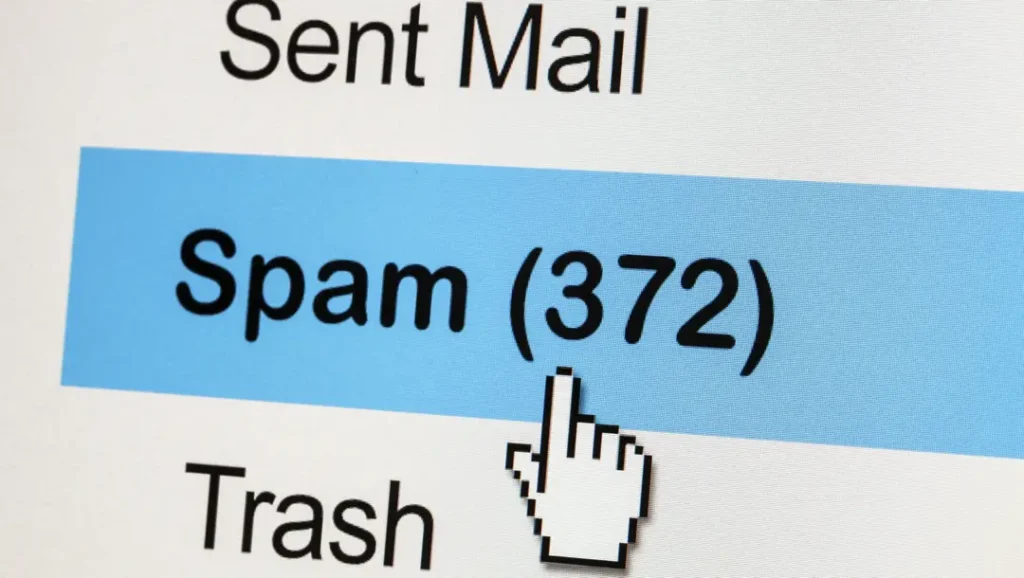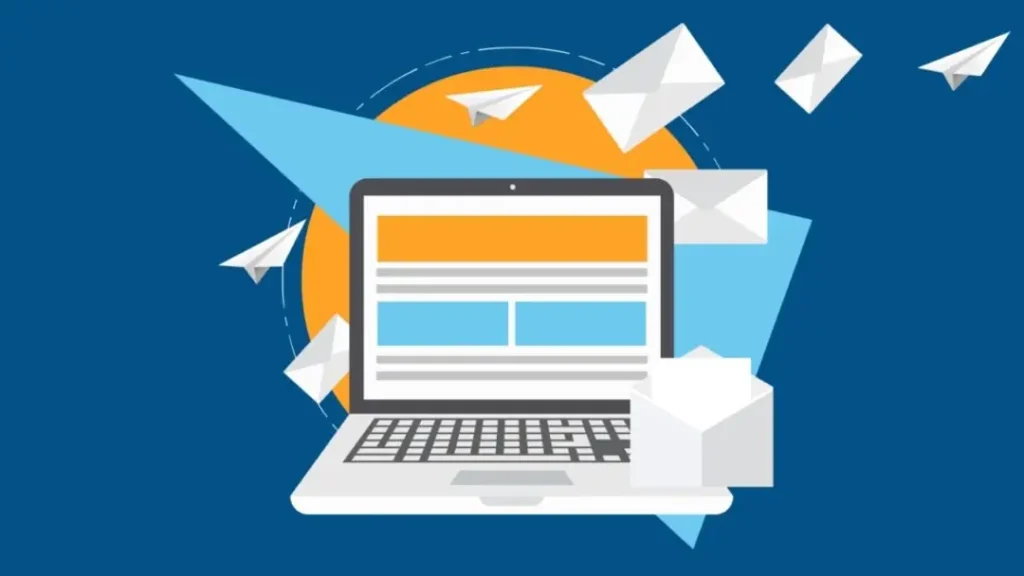Are you struggling to create engaging cold emails? Do you find your messages lost in the sea of countless emails, unopened and overlooked?
You’re not alone. In the digital age, cold emailing has become challenging, with low open rates and meager responses. But worry not – this blog post is here to help. We’ll walk you through ten effective strategies to revolutionize your cold email campaigns, transforming them from mere cold outreach to warm, engaging conversations.
By the end of this article, you’ll have a variety of techniques to grab your recipient’s attention and deliver value, build trust, and foster meaningful connections.
Let’s redefine cold emailing together.
What are Cold Emails?
“Cold emails” are unsolicited emails you send to a potential client or contact without prior interaction. To dive deeper, try thinking of it like a first ice-breaker at a party: you’re reaching out to someone you don’t know with an intention—maybe to make a sale or build a connection.
For example, you might send a cold email to an IT company proposing your software solutions.
Remember, the key to cold emailing is personalization and respect for the receiver’s time—make it worthwhile.
Why Sending Cold Emails Can Be a Bad Idea
When done wrong, sending cold emails can lead you down a rabbit hole of problems and risks. It can damage the reputation of your business and potentially even land you on a universal SPAM blacklist.
- Cold emails can feel like spam: Many cold emails are irrelevant, long, and seem more like unwelcome interruptions than valuable messages. The golden rule is to keep your message brief, relevant, and personal.
- Emailing without a targeted strategy: Mass emailing without targeted segmentation can be your downfall. Ensure you send the right message to the right people at the right time.
- Damage to your domain reputation: The worst-case scenario would include your email domain being flagged as spam, and your everyday work emails to your employees or co-founders might not reach the other side.
- Opt for reliable tools: Use tools like Lusha or Mailshake to find emails and automate and optimize your cold email outreach.
Remember, the objective is to get a positive response, not annoy the receiver.
How to Avoid Sending Cold Emails
To keep your emails out of the SPAM folder while delivering maximum value, here are some tips to consider:
1. Identify email addresses
- Remember: the quality of email contacts is more important than the quantity.
2. Make Sure You Have Something to Offer
Before you lob a cold email into a prospect’s inbox, ensure you’re bringing value to the table. Understanding how you can solve their needs is vital, not just pointing out how fantastic your business is. Here’s how to seal the deal:
- Start by building your online presence. Let your prospects do their homework on you with web content, social profiles, and testimonials.
- Focus on benefits. Rather than raving about your service, highlight how your offering can make your prospect’s life easier.
- Be brief and human. Avoid jargon, keep it authentic, and respect their time by sticking to the crucial points.
- Establish credibility. A credible signature and testimonials from mutual connections help you gain trust faster. Remember, humility reigns supreme in emails.
- Make it relevant. Rather than listing random facts, highlight your understanding of the prospect’s unique problem. You’re writing to a real person, not to an audience of millions.
In essence, offer solutions and become the help they didn’t even know they needed.
When you reach out to clients through cold emails.
— Julio Leon✍️ (@julioleowriting) September 8, 2023
Don't forget these tips:
• Research the client for personalization.
• Get straight to the point in the email body.
• Offer value.
Don't make it complicated, simplicity here truly works.
3. Personalize Your Email Messages
Personalizing your emails can sail them past the icy waters of indifference and right into the port of interest. Here’s why it matters:
- First, get to know your recipient. Google them, visit their website, and stalk (politely) their social media.
- Dig into their work life: the company they work with, their market trends, etc.
- Reference these findings in your email to show you’re not just another spammer.
- Ensure relevancy; your findings should connect to the problem your product/service solves.
- Add a dash of their personal details, mention a common acquaintance or a mutual organization. Remember, impersonal bulk mails are passé. Personalize, always. Be warmer in this world of cold emails.
4. Don’t Bother If You Don’t Receive a Response
Don’t panic if your cold emails aren’t getting responses. Such outcomes are common, with mostly 1-5% reply rates. Here’s how you can maneuver this situation:
- Remember, persistence is critical. Data suggests securing one qualified meeting may take between 18 and 66 activities.
- Be ready to handle objections. You can do this by understanding the recipient’s perspective or motivations.
- Consider revamping your message to sound more authentic and less generic. After all, you’re trying to initiate a real conversation.
- Keep sending follow-up emails. Some studies found that recipients are more likely to respond to the sixth email.
Remember, you’re trying to create dialogue, not sell immediately. Keep engaging!
5. Send Mass Emails Only When Necessary
Avoid excessive mass emails for these reasons:
- Ensures email relevance: The more relevant the business communication, the more effective it will be. Sending unnecessary mass emails could dilute your message and reduce its importance.
- Avoids overwhelming recipients: Too many emails can overwhelm the recipient, increasing the chance of your emails being ignored or marked as spam.
- Maintains sender reputation: Overloading inboxes may harm your sender reputation, impacting your visibility in the long run.
The best times to send mass emails are early morning or after lunch hours, choosing weekdays and avoiding holidays. Always remember the recipient’s convenience and tolerance to maintain a strong email marketing strategy.
6. Use a List Management Tool
A list management tool is your superhero in disguise. It helps you maintain an organized, up-to-date database of all your leads and customers. With it, you can avoid the hurdles of sending cold emails by focusing on an opted-in audience.
Features of a good list management tool include:
- Efficient segmentation capabilities
- Robust opt-in/opt-out features
- Data cleansing functions
- Advanced analytics for better understanding
- Automated nurture sequences
Pros:
- You foster positive relationships by emailing only interested parties.
- It respects privacy regulations like CAN-SPAM.
- Quality over quantity leads to better response rates.
- Accurate tracking and analysis facilitate logical decisions.
- Automation leaves more time for creativity.
Cons:
- Time investment for initial setup can be significant.
- Added subscription costs add to your expenses.
- Regular maintenance is necessary to reap benefits.
- Over-segmentation can complicate your strategy.
- Dependence on automation might obscure the personal touch.
7. Avoid Spamming
No one likes a spammer, especially not your potential clients! When sending out those cold emails, it’s crucial to avoid spammy practices to stay within the law because it’s a surefire way to annoy your recipients and damage your reputation.
- Always ensure that your email header contains accurate information. Misleading subject lines are a big no-no.
- Disclose your location and allow recipients to opt out of your emails quickly.
- Honor opt-out requests without delay.
- Monitor agencies managing your email outreach to comply with these rules, too.
Also, remember to spruce up your online presence before reaching out and avoid overwhelming prospects with attachments. Lastly, keep your email list verified and stay within the daily quota.
Subtle engagement is critical. Keep it real, genuine, and spam-free!

8. Make Sure Your Emails Are Legitimate
In the vast world of cold emailing, ensuring your emails are deemed ‘legitimate’ is crucial. Failing to do so could result in your outreach efforts ending up in spam or even junk folders. Here’s a simple guide to enhancing your email credibility:
- Select a reputable email service provider. Reliable ESPs can validate your emails, making them less likely to end up as spam.
- Authenticate your emails. Set up SPF, DKIM, and DMARC records to establish credibility with ESPs.
- Gradually warm up your new email account. Start by sending a few emails daily and increase the volume over time. This reduces suspicion in ESPs.
- Create a hyper-targeted prospect list. Large, generic audiences won’t yield the desired results. Tailor your prospect list to increase engagement.
- Use simple, invoice-like text in the emails. Flashy marketing pitches may trigger spam filters.
- Include your personal info. Full name, contact details, personal photos, or company logos to make your emails more credible.
9. Make Sure You Have the Right Format
The correct format is integral to avoiding the disdain of cold emails. It not only keeps you credible, but it also helps establish an initial relationship. Here’s what you need to do:
- Address the person by name and ensure their details are correct. Misinformation can cause mistrust.
- Keep your sentences short for easy digestion. Avoid large words and lengthy details.
- Stick to the point. Be clear and concise with your intent and call to action.
- Double-check your links. Broken links can damage your credibility.
- Show your worth. Explain why you’re significant and trustworthy. Use mutual connections or relevant credentials as social proof.
- Offer some value. Help to alleviate a problem they might have or provide something they want.
Remember, the goal is to change your status from a “stranger” to a trusted associate.

10. Follow the Right Sequence
Cold emails can be a game-changer if you follow the proper sequence. It not only improves deliverability but also increases the likelihood of achieving results.
- Always start with user research. Understand who your ideal prospects are and their needs.
- Remember, you’re writing to solve the recipient’s problem, so focus on them. Avoid bragging about yourself or your business.
- Pitch a free trial of your product. This costs the prospect a few minutes and an email, reducing their risk of trying out your product.
- Be available for a call, but ensure it’s not more than 20 minutes.
- Send emails in increasing order, starting with 5-10 emails for the 1st ten days, then slowly increase it to 30-50 by the end of the month.
- Always write a unique email for each prospect, but use a loose template for ease of operation.
With the right approach, your cold emails will hit the mark each time.
Alternative Strategies to Cold Emails.
Instead of sending cold emails, you can also focus on alternative strategies such as:
1. Research and Target Emails
Choosing a research and targeting strategy for emails can be a more effective alternative to sending cold emails. This tactic ensures you are talking to the right audience, essential for tailoring your message and increasing your chances of a response. Here’s why:
- Ensures data reliability.
- Increased email engagement.
- Lower bounce rate.
To achieve this, follow these simple steps:
- Firstly, pick out the relevant details about your recipient by researching them properly. This could be their name, company, or social media activity.
- Use prospecting tools like Hunter.io, Snov.io or Voila Norbert to find email addresses. Remember, the attributes of your target are paramount, not their number.
- Finally, validate the emails before hitting send. You can use validation tools like the free email address verification tool.
Choose your audience carefully and make your content relatable; this can be your key to unlocking successful campaigns.
2. Personalize Your Emails
Personalizing emails is an effective alternative to cold emails as it amplifies reach understanding and creates connectivity. It meets your audience where they are and delivers them what they want.
- Superior engagement levels
- Enhanced trust factors
- High deliverability
- Improved reply rate
- Easy customization
Pros:
- Recipients feel understood, boosting response rates.
- It offers a personal touch, fostering trust.
- Unique, personalized root increases deliverability.
- Relevantly tailored experience that improves reply rate.
- Easily adaptable to the recipient’s needs.
Cons:
- Time-consuming research for personalizing emails.
- May intimidate if not done subtly.
- Loses efficiency if not accurately targeted.
- Personalization mistakes can harm the brand’s reputation.
- Needs correct data to be effective.
3. Use Warm Leads to Optimize Success
Shifting from cold to warm leads can work wonders in your marketing strategy. Warm leads are familiar with your brand, making them more receptive to your pitches than cold prospects.
Top Features of Using Warm Leads:
- Warm leads have previous exposure to your brand.
- They can easily recognize your product or service.
- They’re more likely to respond positively to your approaches.
- Warm leads provide more fruitful relationships in the long run.
- They boost your conversion rates remarkably.
With warm leads, your chances of getting a positive response increase significantly. Their prior familiarity with your products or services boosts the conversion rate.
Pro: Less Time Consuming.
When dealing with warm leads, much of the initial groundwork of raising awareness about your offering is already done. This makes your sales process quicker.
Pro: Enhances Trust
Trust is already established in warm leads, a factor that plays a crucial role in the success of any marketing endeavor.
Pro: Increased Return on Investment (ROI)
Dealing with warm leads offers higher ROI since these leads are more likely to convert into customers.
Pro: Personalized Marketing
Warm leads allow for a more personalized approach, improving the effectiveness of your marketing campaigns.
Con: Limited Resource
Warm leads are a smaller group than cold leads, which could limit your sales opportunities.
Con: Over-Repetition
Since these leads are already familiar with your brand, using the same pitch excessively might lead to disinterest or annoyance.
Con: High Expectation
Estimated expectations might be high with warm leads, making meeting or exceeding them challenging.
Con: Time-Sensitive
In the case of warm leads, timing is critical. Contact them too frequently, and they may feel harassed; too little, and they may lose interest.
Con: Requires Continuous Nurturing
Warm leads require regular engagement to keep them interested in your products or services, requiring additional time and effort.
4. Follow-up Consistently
- Understand that most people are busy and might not respond to your first email. Patience is key.
- Implement automated follow-ups. Instead of manually sending multiple emails, set a sequence of auto follow-ups for any cold campaign.
- Find the balance in being persistent without irritating the receiver.
- Use reply templates for quick responses. Platforms like GMass can help manage your responses and save time.
- Turn the behavior segments into a new campaign. This refers to those who interacted with your previous emails.
- Increase the volume of your emails and reduce the bounce rate for better email deliverability.
- Finally, accept that you might not always get a response. Do not get discouraged by a low reply rate. Remember, Gartner reports it takes 66 activities to book one qualified meeting. So, stay persistent!
5. Send Emails That are Easy to Read and Understand
Are you looking for a better alternative to cold emails? Try sending emails that are easy to read, concise, and get right to the point. Here’s how:
- Keep your emails short and sweet: With mobile-optimized emails seeing 83% more replies, aim for 25-50 words to respect your reader’s time.
- Ditch lengthy paragraphs: Emails are eight times more likely to be read on phones, so use white space wisely. Break your text into short, easily digestible paragraphs.
- Be clear, not clever: Avoid jargon and complex sentences. Writing at a 3rd-5th grade reading level has shown to receive 67% more replies.
- Watch your tone: Stay polite, confident, and casual. Formal wording might hurt your chances of getting a response.
Remember, good emails land in inboxes, not junk folders. Avoid cliches and spammy words, never include links or images, and make sure your mail server settings are correct.
6. Use the Right List
Choosing the correct list dramatically improves your cold emailing success. It’s a strategic alternative, providing accuracy and increased engagement.
To understand the benefits and drawbacks of using the correct list, consider these points:
- Enhanced deliverability
- Reduced bounce rate
- Improved open rate
- Boost in conversions
- Time-saving with pre-verification
- The need for constant updating
- Might miss opportunities in unverified emails
- Potential cost in procuring verified lists
- Risk of false positives in verification
- Limited scale compared to broad cold outreach
7. Don’t Send Spammy Emails
Spammy emails not only annoy recipients but also damage your sender reputation. Here’s why you should avoid sending them:
- They often end up in the spam or junk folder.
- They can diminish brand trust and adversely impact your image.
- They can result in you being blacklisted by Internet Service Providers (ISPs).
Pros of not sending spammy emails:
- Enhances your online reputation.
- Increases the chances of your email being read.
- Builds trust and credibility with your audience.
- Increases engagement and response rates.
- Leads to better customer retention.
Cons of not sending spammy emails:
- It might limit the number of emails you can send in a day.
- It requires more time and effort to provide customized content.
- It may lengthen the process of reaching out to potential customers.
- Could potentially reduce the pool of recipients due to selective targeting.
- Developing compelling, non-spammy content consistently may be challenging.
8. Don’t Be Pushy
Adopting a strategy that avoids being pushy is an outstanding substitution for the classical approach of cold emailing. This method works best because it respects the recipient’s space and plants the seeds of interest without forceful persuasion.
Top features of this strategy:
- It’s subtle yet effective.
- It allows for a slow build-up of interest.
- It ensures that the audience isn’t overwhelmed.
- It’s inherently respectful.
- It’s patient and plays the long game.
Pros:
- Respects recipient’s inbox.
- No hard sell.
- Slowly delivers value.
- Paves the way for future engagement.
- Abrupt unsubscription is less likely.
Cons:
- Takes longer to see results.
- Requires patience and consistency.
- Not suitable for immediate deadlines.
- Impact can be slow.
- Requires a well-planned strategy over time.
9. Make Sure Your Emails Have the Right Content
Having the right content in your emails is your golden ticket to breaking the monotony of cold emails. Here’s how to do it:
- Be concise: Keep emails short and direct. People prefer emails less than 75 words, with an ideal 25-50 words for higher engagement.
- Embrace white space: Avoid long paragraphs. Use one-line sentences or short paragraphs to make emails easier to read and mobile-friendly.
- Clarity over complexity: Ensure your writing is easy to understand. Try aiming for a 3rd to 5th-grade reading level.
- Maintain your tone: Be polite, positive, confident, and informal. Avoid sounding too official or too casual.
- Deliverability: Make sure your email lands in the inbox. Avoid spammy words, links, images, and sending the same message repeatedly.
- Avoid clichés: ‘I hope this finds you well,’ ‘Do you have 15 minutes?’. They’re overused and lack sincerity.
This guy sent the best cold email ever sent to get a job👇🏻 pic.twitter.com/rll5a3ES0D
— Santiago Poli (@santiagopoli) September 7, 2023
Remember, quality over quantity always wins in the email game.
10. Use Automation Tools
Automation tools are a great alternative to cold emails due to their precision and customizability. High-performing tools offer a unified solution to cope with the grind and the hustle.
- Mailshake’s A/B testing for email templates and automated response feature
- Saleshandy’s capability to run successful cold email campaigns
- Automated email sequences to avoid blocking email accounts
- Bulk email sending with primary inbox assurance
Pros:
- Saves time with pre-set sequences.
- Enhances optimization through A/B testing.
- Ensures deliverability using advanced algorithms.
- Personalization on a large scale.
- Data-driven approach for improved results.
Cons:
- Overdependence can lead to an impersonal touch.
- High learning curve for beginners.
- Possible increased costs with premium features.
- Software glitches may disrupt campaigns.
- Demands thorough scrutiny to prevent spamming.
Conclusion
In conclusion, the game of cold emailing has evolved dramatically over time, and sending bland, mass emails no longer cuts it. Today, it’s about delivering quality content, respecting your recipient’s space, and leveraging technology to your advantage.
Remember, it’s a marathon, not a sprint. Don’t rush your prospects into buying from you; nurture them, deliver value consistently, and watch as they become loyal customers.
If you’re ready to take your cold emailing game to the next level, implement the strategies and techniques discussed in this post. And remember, the right tools can make all the difference. So, explore, experiment, and find what works best for you. Good luck!

Ready to revolutionize your cold email campaigns?
Stop spinning your wheels and get the desired results with timberRidge’s email marketing services. We have a team of seasoned professionals eager to assist you in delivering high-quality, personalized, and effective emails that recipients actually want to read.Let’s transform your cold emails into warm prospects. Contact us now to give your email marketing a significant boost!

